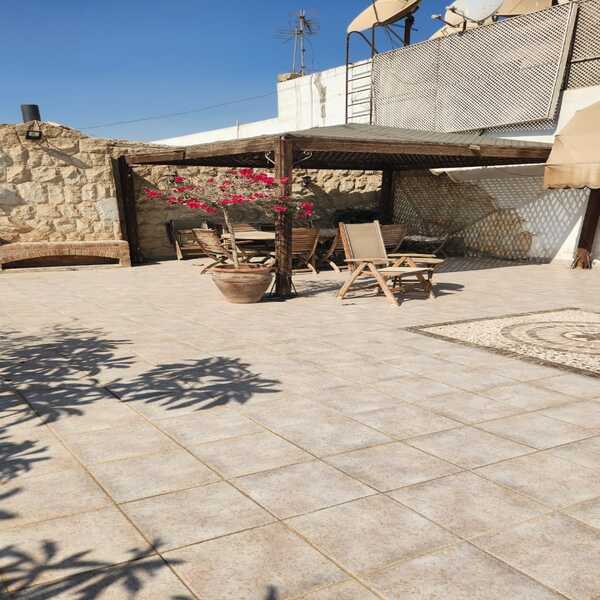Everything has a price .. even the pyramids and the Sphinx?

Everything has a price .. even the pyramids and the Sphinx?
Hisham Mohammed Al-Mahdi
Real estate appraisal expert (29) appraiser (436) damage assessment expert (1052)
The cultural, architectural and other heritage of all kinds and forms is a source of pride for nations and a proof of their nobility and authenticity, that is, it expresses national identity and a link between the past and the present. Who say that because it is tantamount to sacrilege because such monuments are unique and therefore priceless. But “priceless” is a vague term, especially in the current economic era. The cost of that must be known, and we are not talking here about evaluating it for the purpose of selling, it may be for the purpose of insuring it, or compensation for any damages, God forbid, or its restoration or other evaluation purposes.
Millions of tourists go to the famous monuments to see them closely and photograph them, and everyone talks about the historical or cultural value of these archaeological properties, although Egypt is the largest country in the world that contains this type of real estate, but no one thought about the monetary value of it. Most of us enjoyed watching National Geographic Abu Dhabi channel in the series "Valuing Priceless" in 3 episodes regarding the pyramid of Khufu, engineer Kevin Cook tries, in the episode "Pyramid of Khufu", to estimate the monetary value of the Giza pyramid, which is the last remaining of the seven ancient wonders of the ancient world with a weight of up to 5.75 million tons of limestone. And Cook will explore 3 ways to price the pyramid. The first two methods are in the term of evaluators, determining the reproduction cost, where the first method is its value as scrap (weight) meaning the value of the stones if they were offered for sale? And its value reached more than 115 million dollars. Then the cost of rebuilding or trying to simulate the realistic look of the building? He concluded that the cost of building the pyramid, just as the ancient Egyptians built it, is about $8 billion, and the third pricing method, how much would it be worth if it was converted to a company and its shares were displayed on the Wall Street Stock Exchange, and how much would it cost to ship it to the United States? The cost of moving the pyramid to New York was about $7.5 million (and if I don’t know why it was transferred?) to turn it into a company and display its shares in the stock market. Many real estate projects around the world are made real estate funds and their shares are traded without real estate transfer, even if the heritage property is transferred to a company. With shares and displaying them on the stock exchange is a good idea.
We will shed light on some criteria for evaluating heritage and historical properties quickly. If all heritage properties are evaluated at the world level, for example, the Eiffel Tower, the Kremlin, the White House, the Roman Theater (Colosseum), Big Ben, Petra ... etc., what will be the value. Through objective evaluation criteria, these criteria are very complex for amateurs, and the most complex thing in them is determining the historical and cultural value. Among the criteria that were concerned with evaluating heritage and historical real estate are the Russian and international standards.
The degree of complexity (saturation) of the architectural design.
The historical period of the heritage property.
- The historical and cultural value of the heritage property (accounting category).
In practice, to evaluate heritage and historical properties, the results of historical and archaeological research are used, in addition to traditional knowledge of an engineering nature, the cost of restoration, etc., and this is by applying the same methods of evaluating traditional properties, namely: the cost method, the method of comparing sales, and the capitalization method, contrary to what is known by real estate valuation experts to reject the method Cost in old buildings In this criterion, valuation experts are obliged to apply the cost method, which is the basis for evaluating heritage properties and cannot be deviated from, because the application of the cost method for evaluating heritage buildings combines the historical and cultural value and the value of the property as a building, as well as the cost of restoration or rehabilitation. Two equations were made. One is for evaluating historical properties and the other for evaluating archaeological properties. The main addition here in the two equations for the traditional cost method (without entering into other details) is the method of calculating the historical and cultural importance and evaluating the intangible factors of the heritage property and taking into account the natural depreciation and functional depreciation because of its impact on the high cost Restoration can be done Define the equation as follows:
To determine the value using the cost method, the following equations are used:
(1) RCADD+ RCHERITAGE+CCOST=CGROUND
where :
CGROUND = cost of land
RCHERITAGE = cost of reproduction of the real estate heritage structure.
RCADD = clone cost for any additional improvements
The main difference lies in the cost of reproduction of the RCHERITAGE structure, which is determined on the basis of eight factors, as follows:
1- History (a chronological gradation has been set starting from the first millennium of the BC for the archaeological properties).
2- The historical (archaeological) value, and it is listed according to three global, regional and national values.
3- Architectural technical value (unique - distinctive - typical).
4- Technological value (unique - exemplary).
5- Scarcity.
6- Manufacturer.
7- The value of surrounding site planning.
8 - Protecting the historical function (of the real estate structure and its groups).
Also, an equation for the restoration of the heritage property was taken into account, and because the place does not allow for detailed mathematical equations, I will content myself with summarizing the equations in the following table
where :
RCORIGINAL = The cost of reproduction of the original part of the structure of the property.
RCrestoration = cost of reproduction to cost of repair or replacement.
RCNO-RESTORATION = Reproduction cost for cost not included with repair or replacement cost
CI = the value of intangible factors that relate to the characteristics of the original part of the real estate structure.
CJ






.jpeg)

.jpg)